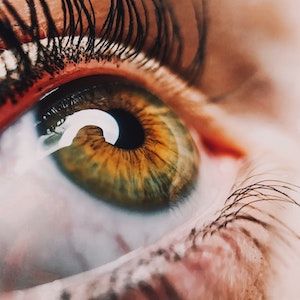Article
Presence of Residual Subretinal Fluid May Be Linked to Better BCVA in nAMD Treatment
Author(s):
However, the presence of residual IRF was associated with substantially worse BCVA at last study observation and less improvement of BCVA from baseline.
Peter J. Kertes, MD

The presence of residual subretinal fluid (SRF) could be linked to slightly better best-corrected visual acuity (BCVA) when treating neovascular age-related macular degeneration (nAMD), according to an original investigation and meta-analysis published in JAMA Ophthalmology.
Investigators from Toronto, Canada conducted a systematic meta-analysis of published literature regarding patients with anti-VEGF patients in order to examine the relationship between residual retinal fluid, SRF, and IRF with visual acuity following anti-VEGF treatment.
The study authors pulled studies between January 2005 and August 2021 using the Medline, Embase, and Cochrane Library databases. Yhey included studies that reported visual acuity in nAMD patients categorized by the presence or absence of residual SRF, IRF, or any retinal fluid after receiving intravitreal bevacizumab, ranibizumab, aflibercept, or brolucizumab.
Ultimately, the study authors found 11 studies eligible for inclusion for their analysis, including 6 randomized clinical trials made up of 3,092 eyes. For the studies that were included, the mean age per study ranged from 72 to 79 years, the investigators wrote.
The mean baseline BCVA in ETDRS letter score ranged from 47 to 69, the investigators added, but noted that in 3 studies the mean baseline BCVA in the SRF presence group was 62 and the mean baseline BCVA for the SRF absence group was 55. In 3 other studies, the study authors said the mean baseline BCVA for the IRF presence group was 51 and the mean baseline BCVA for the IRF absence group was 52.
In 7 studies, there were ≥1 outcomes that compared eyes with no SRF and eyes with SRF at last observation, and the study authors learned that eyes with SRF had a better BCVA at last observation when compared to eyes without SRF at last study observation. They also found that there was no difference in change in BCVA from baseline among eyes with and without SRF at last study observation. Additionally, there was no difference in retinal thickness between the groups at last study observation.
Another 7 studies examined ≥1 outcomes comparing eyes with and without IRF at last study observation. From those studies, the investigators observed that eyes without IRF had a better BCVA compared to those with IRF at last study observation. Eyes without IRF had a better change in BCVA compared to eyes with IRF, but there was no observed difference in retinal thickness at last study observation between the two groups at last study observation, the study authors wrote.
A majority of the studies reported on comparing eyes with and without retinal fluid, finding that eyes with no retinal fluid at last study observation had a better BCVA compared to those with retinal fluid. Eyes without retinal fluid had a better change in BCVA compared to eyes with retinal fluid at last observation. Finally, the study authors learned that eyes without retinal fluid had a thinner retinal thickness at last study compared to the eyes with retinal fluid.
“We found that the BCVA in eyes with residual SRF was slightly better than eyes without SRF but these findings were driven in large part by one study,” study author Peter J. Kertes, MD, told HCPLive. “The BCVA was worse in eyes with IRF than those without IRF. While these findings support tolerance of residual SRF when treating nAMD, future clinical trials would be needed to confirm the association of residual SRF on BCVA outcomes.”





